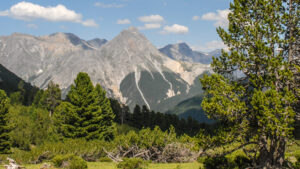Abstract/Description
Mountains provide a critical source of fresh water to downstream areas, and it is commonly assumed that much of this water resource consists of snow and glacier melt originating from the alpine and nival zones at the upper reaches of the mountains. Despite the obvious importance and buffering capacity of snow and glacier melt, a systematic global assessment of elevational variations in mountain water yield has not been attempted previously. In this study, we have combined global datasets of elevation, mountain range delineations, land cover, downscaled reanalysis, and annual glacier mass balance to partition mountain water yield per elevation band into runoff components: rainfall, snow melt, and (balanced and imbalanced) glacier melt. Our results show that, while mountains regions make up only 18% of river basin area globally, they supply 35% of the total runoff. Most mountain runoff originates from rainfall (83%), with substantially smaller contributions from snow melt (14%) and glacier melt (3%, of which only one fourth is due to glacier mass loss). Reflecting the concentration of area at lower elevations, we find that, on average, 68% of all mountain water is supplied by the lower reaches and only 4% by the upper reaches, i.e. the lowest and highest one-thirds of the mountain elevation range in a basin, respectively. There is great variability in runoff component contributions between different river basins and some basins exhibit large interannual fluctuations in runoff and runoff contributors. These findings indicate that the lower reaches of mountains are particularly important for their water yield and are an important area of focus for the development of more efficient climate change impact and adaptation policies for water resources management. We argue that a holistic approach, aiming to understand hydrological contributions and changes across all biophysical zones along the entire elevation gradient of mountain ranges, is necessary to fully anticipate future shifts in this critical global water supply.


